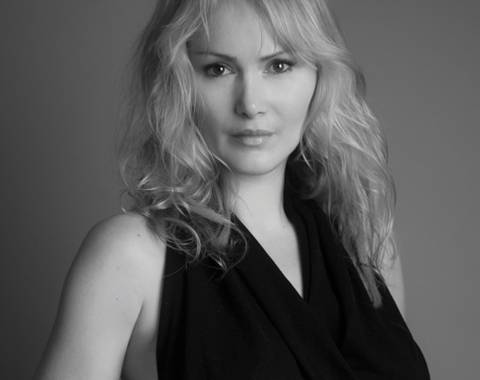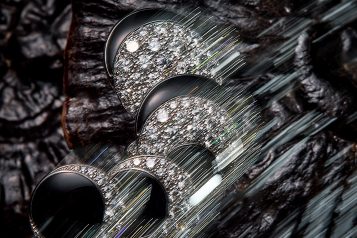In our second installment of The Legendary Estates of Beverly Hills, Jeffrey Hyland gives Haute Living readers an insider’s peak at the history of two of these spectacular properties. For more of the goods, the 430-page, 12-inch by 16-inch book can be ordered on www.thelegendaryestatesofbeverlyhills.com.
Despite their charade of a marriage, the Keatons kept up the celebrity lifestyle of showy cars, clothes, and entertainment.
The Buster Keaton Estate
Beverly Hills
In Hollywood’s “Golden Age” of the 1920s, any actor or actress worth “top billing” lived in a showplace Beverly Hills estate. One of those favored stars was Buster Keaton, the sad-faced comedian and talented film director.
When Keaton showed guests around his 20-room Italian Renaissance-style mansion, three blocks behind the Beverly Hills Hotel, he sometimes joked, “I took a lot of pratfalls to build that dump.”
Keaton had mixed emotions about the 3.5-acre estate, which was completed in 1926. He had worked with the architect on its design, and he proudly showed off the mansion in his film, Parlor, Bedroom and Bath (1931). Yet, he also felt forced into this very expensive residence by his wife Natalie, who was desperate to keep up with her sisters Constance and Norma Talmadge, who were major stars in the 1920s. Natalie-the least attractive and least famous of the three sisters-refused to be photographed in the same outfit twice, and she reportedly spent $1,000 a week ($12,000 in 2009 dollars) on clothes.
With these spendthrift ways, Natalie Talmadge was not only indulging herself, she was getting back at Buster. Before moving into the mansion with their two young sons, Joseph and Robert, Natalie told Buster that she hated him and refused any further conjugal rights.
The 29-year-old Buster, in turn, informed his wife that he would accept her decision and have affairs outside the marriage. He kept his word and regularly slipped out of the house by an exterior staircase off his bedroom. Natalie had him followed by private detectives.
Despite their charade of a marriage, the Keatons kept up the celebrity lifestyle of showy cars, clothes, and entertainment. At some events, Buster shouted out to guests from the second-floor balcony overlooking the two-story-tall entrance hall, then grabbed a specially reinforced drapery that allowed him to swing from the staircase landing down to the first floor living room. Guests always loved Keaton’s grand entrance.
Buster entertained his many actor friends at the estate. “We used to have poker parties where a man would win or lose $50,000 ($600,000 today) in an evening and either way didn’t worry about it,” Buster recalled years later. “He could always make another picture.” Keaton even owned a little-used yacht that cost $120,000 ($1.5 million today).
Such extravagance proved to be Buster Keaton’s downfall. He lost most of his fortune in the 1929 stock market crash, and films were not going to be his financial salvation, because his career was spiraling downward. In 1932, Buster moved out of the mansion, Natalie divorced him, and he declared bankruptcy. Keaton-always the trooper-relaunched himself on a more modest career as a comedy coach, writer, and director for several more decades. His unlikely second marriage to an MGM contract dancer, who was 23 years his junior, lasted until his death in 1966.
And what of his Beverly Hills estate?
After Natalie sold the property two months following their divorce in 1932, the estate had half a dozen owners. Several residents updated some rooms. One owner, actress Pamela Mason, sold off the lower gardens and swimming pool for three house lots. Still, the Keaton estate survived at a time when so many 1920s movie star mansions were being bulldozed out of existence.
In 2002, new buyers purchased the Keaton estate, and they carried out significant restoration work, thereby reclaiming much of the original beauty that had been lost in the previous decades. The story had a happy ending after all.
Frederick Weisman Art Foundation
Holmby Hills
Rags-to-riches entrepreneur Frederick Weisman became one of the greatest late 20th-century art collectors.
Starting in the 1950s, he and his wife Marcia purchased paintings, drawings, and sculptures by Helen Frankenthaler, Alberto Giacometti, Willem de Kooning, Barnett Newman, Jackson Pollock, Mark Rothko, Clyfford Still, and Andy Warhol. Two of the Weisman’s favorite Warhol works were their own portraits.
The Weismans bought boldly. They recognized-and purchased-Abstract Expressionist works and Pop Art before those styles became popular. When the Weismans could not choose between two de Kooning paintings-Pink Angels and Dark Pond-they famously purchased both works together.
In 1981, the Weismans were amicably divorced. When it came time to split the art collection, they flipped a coin. Marcia won the toss, and she got the first choice. Then they quickly selected their favorite items, one after another. The entire process reportedly took only 45 minutes.
Weisman did not allow a major life event like divorce to stand in his way of collecting. In 1982, he moved into the Holmby Hills estate that is now the Frederick Weisman Art Foundation.
He couldn’t spend money on art fast enough. The source of this new wealth came from his daring 1970 purchase of the Middle Atlantic States distributorship for a little-known Japanese car company…Toyota. He became the largest U.S. importer of Japanese cars.
His Holmby Hills estate was soon overflowing with art. When Weisman ran out of wall space, he started displaying works on the ceilings. He delighted in creating provocative inconsistencies, like hanging his latest East Village “find” next to the work of an acknowledged contemporary master.
He placed sculptures around the mansion and estate grounds to delight visitors, or, more often, catch them off guard. Duane Hanson’s Florida Shopper-the statue of a typical polyester-clad Florida tourist-stood near the 1920s, Spanish-style staircase. Hanson’s Old Man Dozing slept in Weisman’s study.
Since Weisman’s death in 1994, the Frederick Weisman Art Foundation has loaned works to museum shows, and it offers appointment-only tours of the mansion and art pavilion. Seeing a small portion of this large and very personal collection, visitors are easily reminded of one of Weisman’s favorite sayings: “I don’t think there is anything that communicates better than art. It is quicker than language and clearer than philosophy.”






















